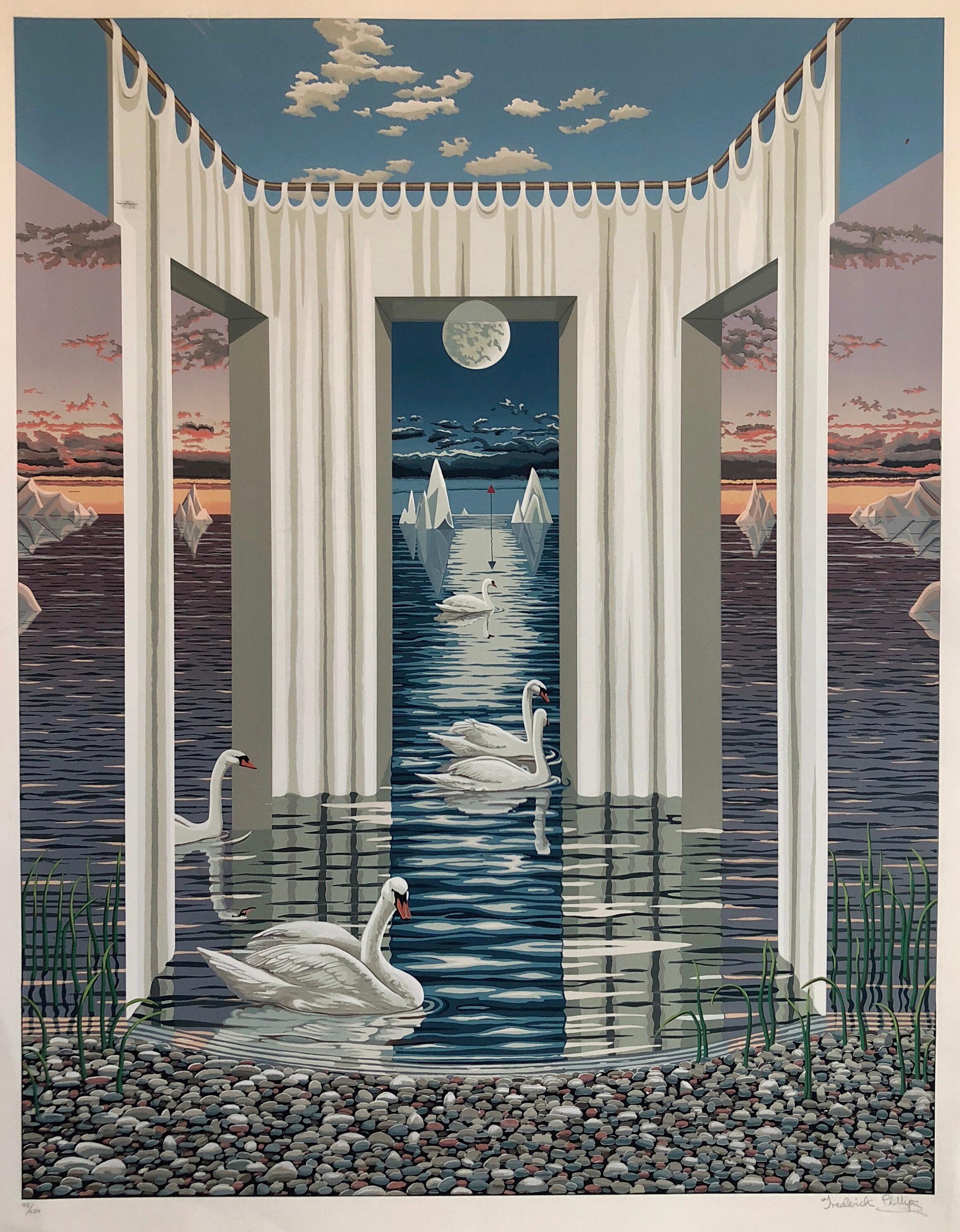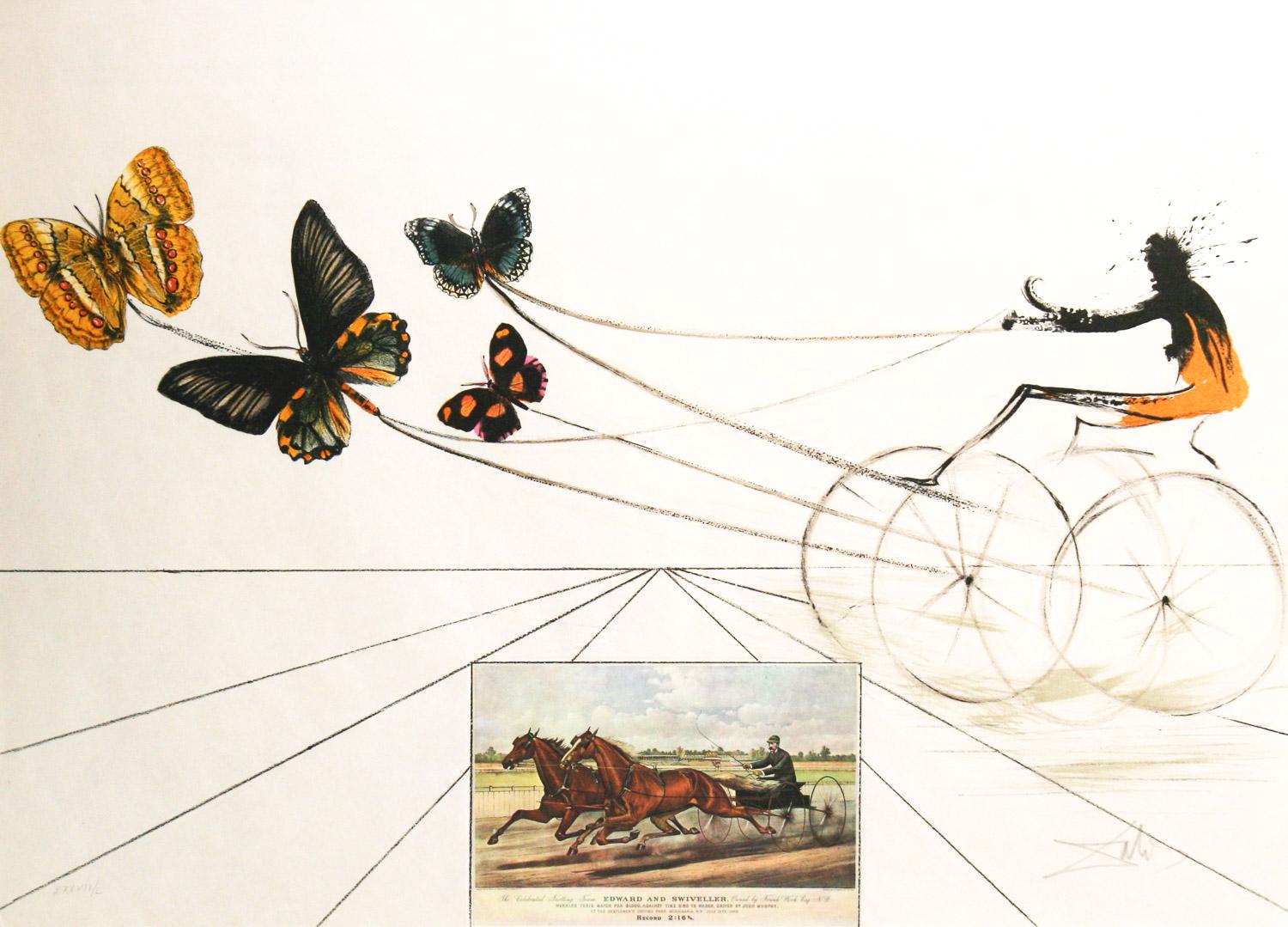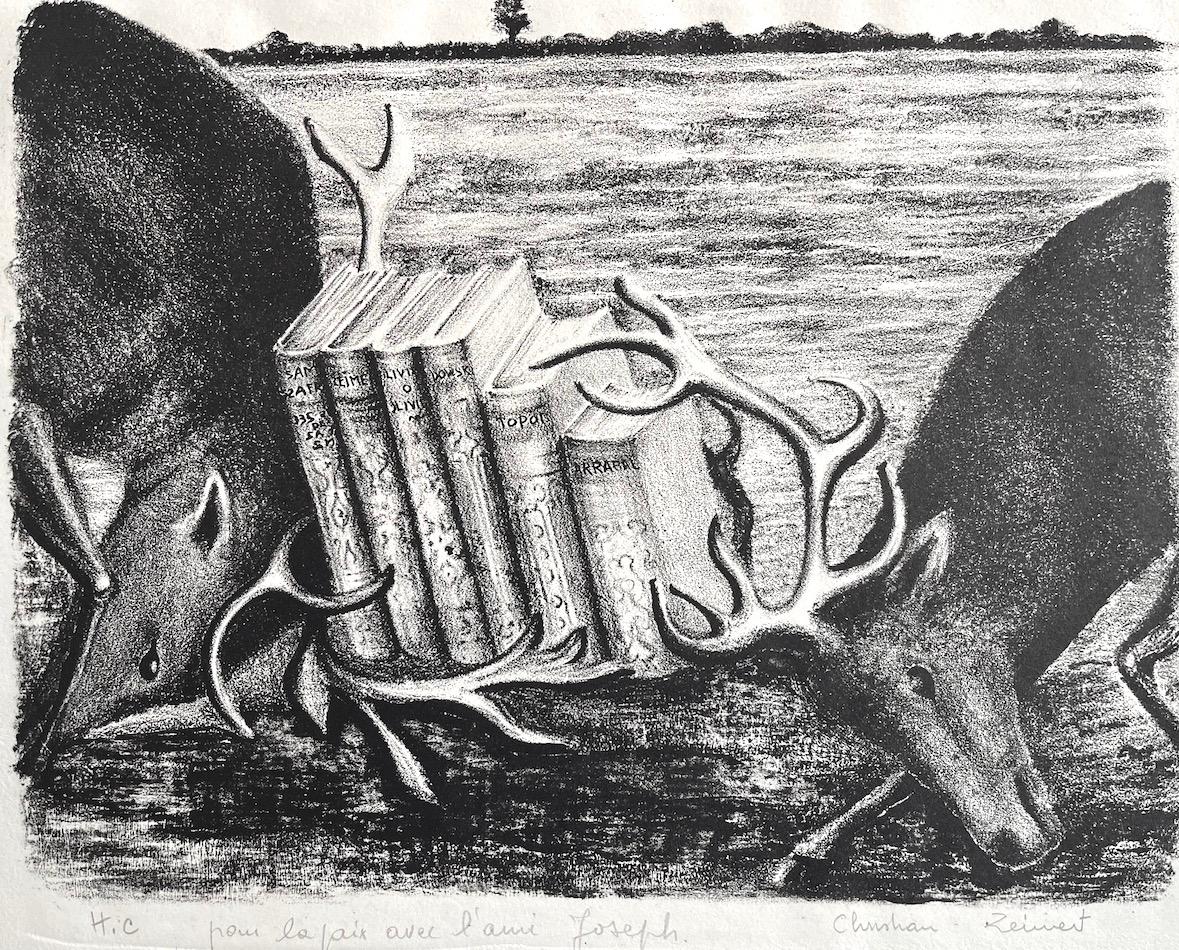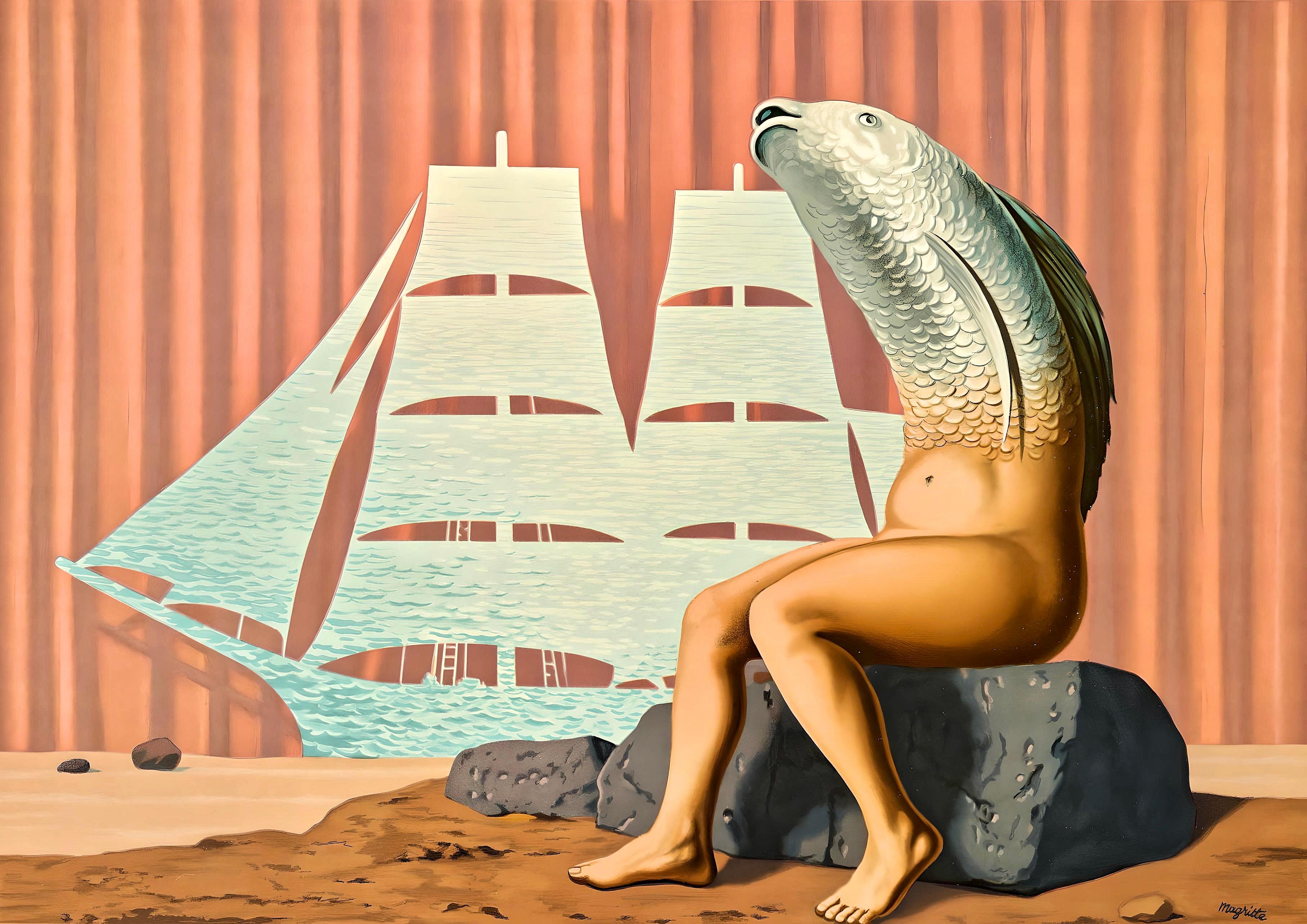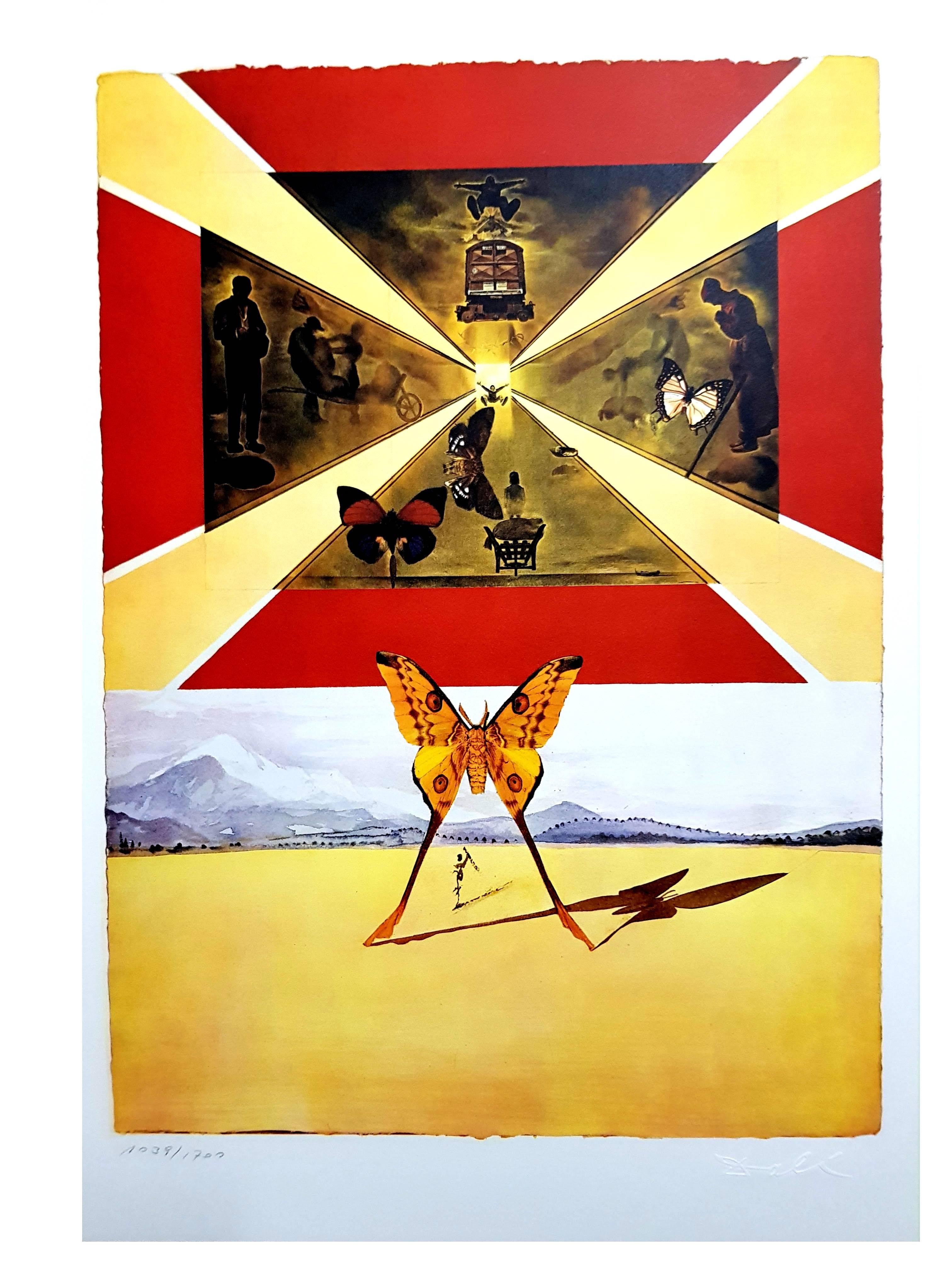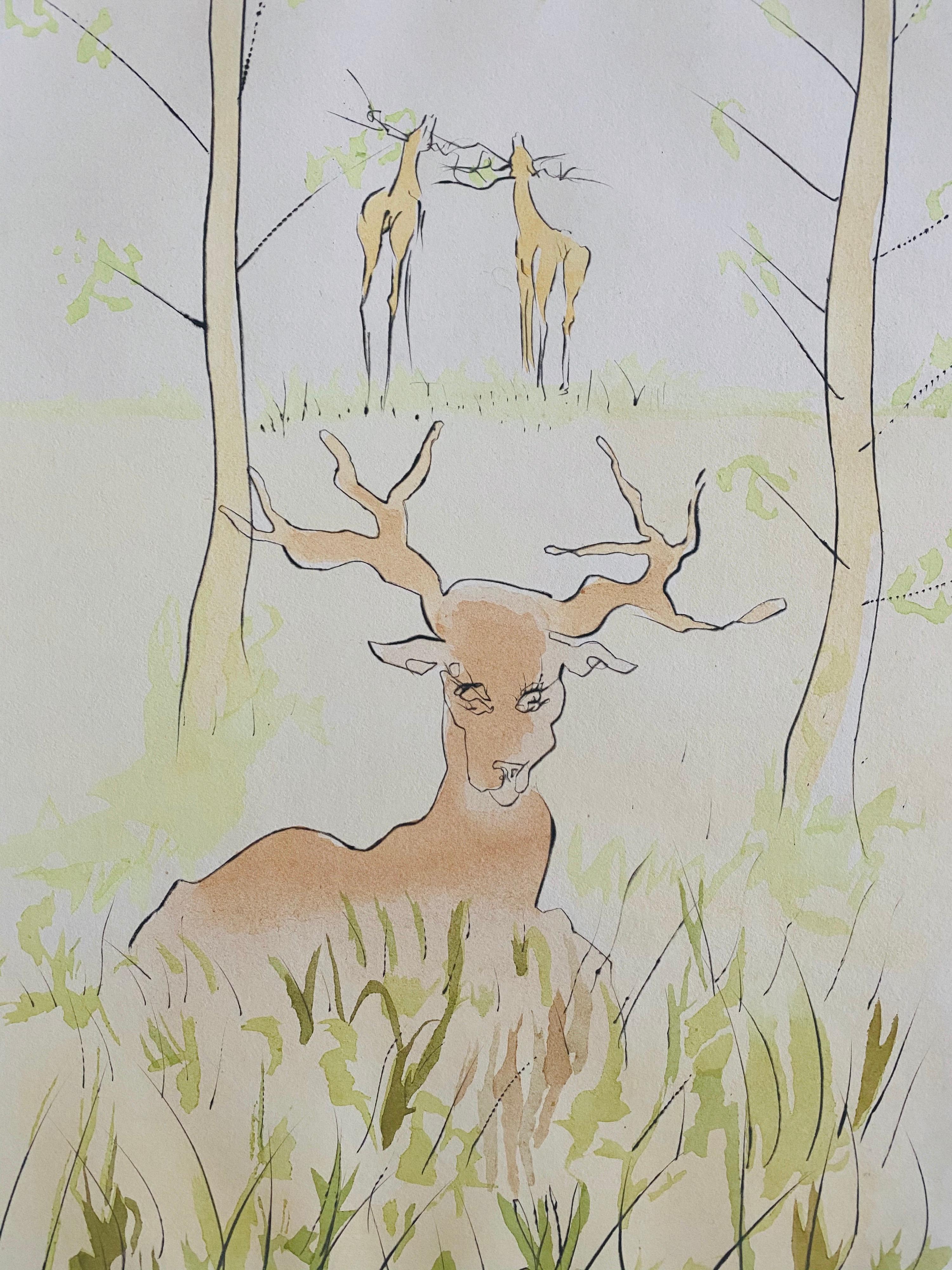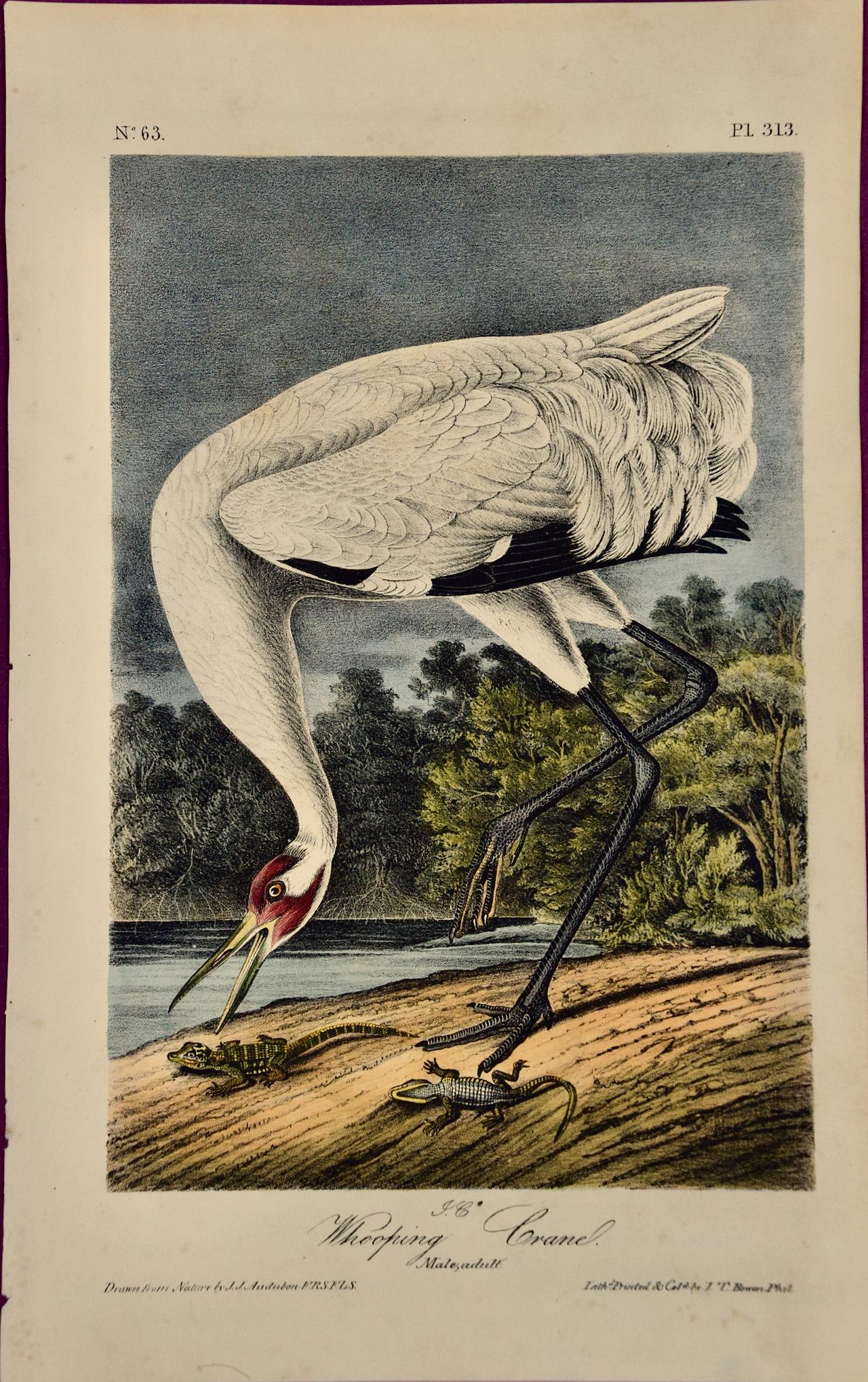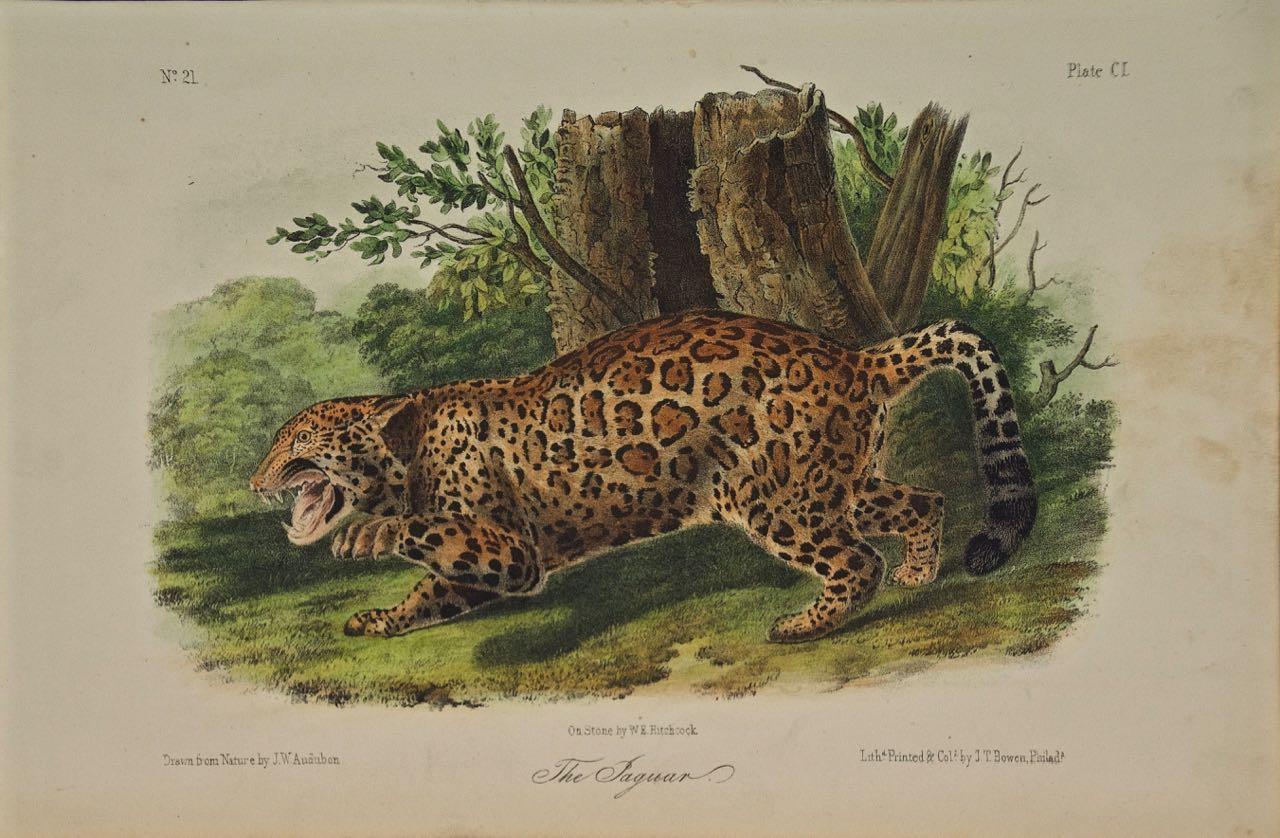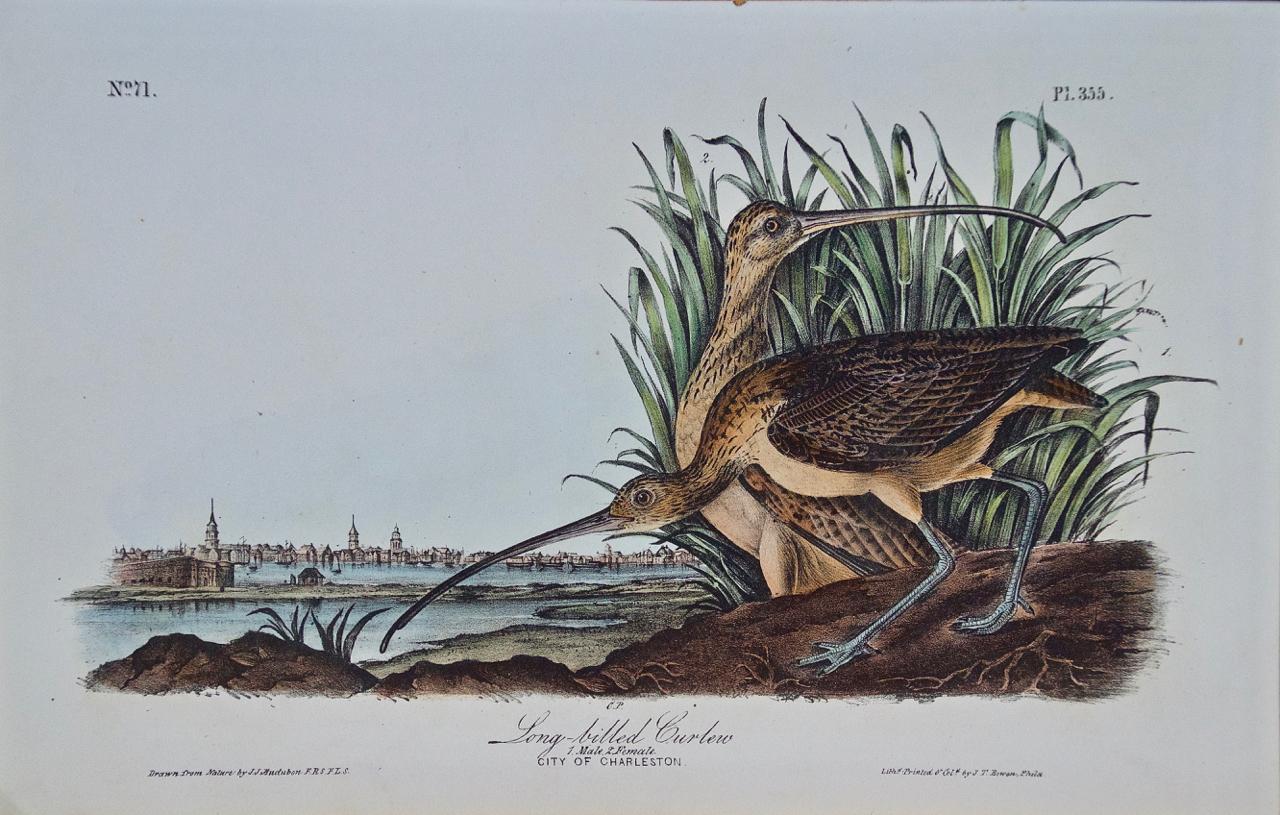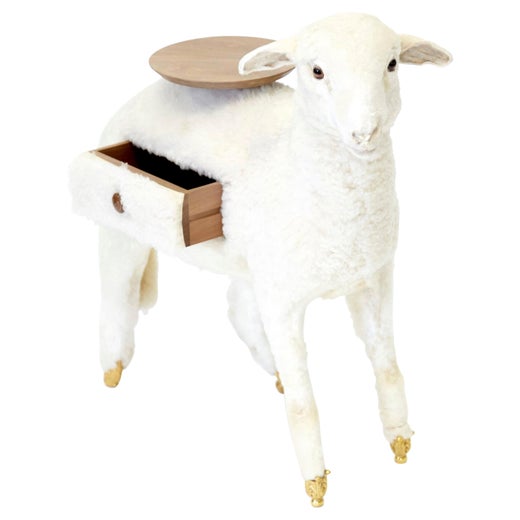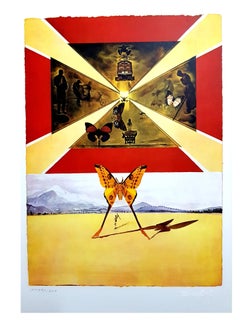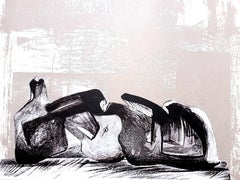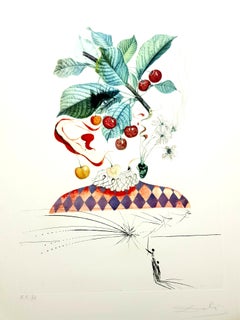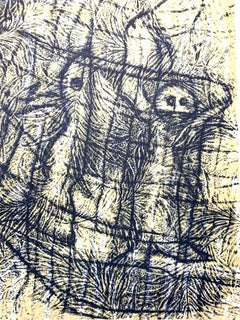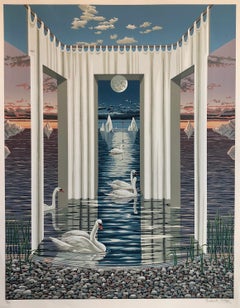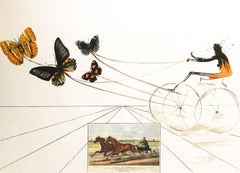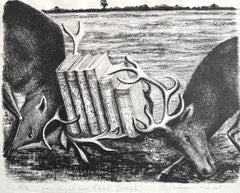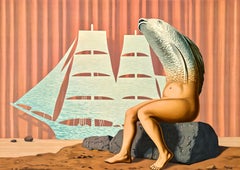
Salvador Dali (after) - Auvergne - Lithograph
Want more images or videos?
Request additional images or videos from the seller
1 of 14
(after) Salvador DaliSalvador Dali (after) - Auvergne - Lithograph1969
1969
About the Item
- Creator:(after) Salvador Dali (1904 - 1989, Spanish)
- Creation Year:1969
- Dimensions:Height: 18.31 in (46.5 cm)Width: 13.39 in (34 cm)Depth: 0.04 in (1 mm)
- Medium:
- Movement & Style:
- Period:
- Condition:
- Gallery Location:Collonge Bellerive, Geneve, CH
- Reference Number:1stDibs: LU16129469332
(after) Salvador Dali
Salvador Dali (1904 – 1989) was a Spanish surrealist artist renowned for his technical skill, precise draftsmanship and the striking and bizarre images in his work. Born in Figueres, Catalonia, Dali received his formal education in fine arts in Madrid. Influenced by Impressionism and the Renaissance masters from a young age, he became increasingly attracted to Cubism and avant-garde movements. He moved closer to Surrealism in the late 1920s and joined the Surrealist group in 1929, soon becoming one of its leading exponents. His best-known work, The Persistence of Memory, was completed in August 1931, and is one of the most famous Surrealist paintings. Dali lived in France throughout the Spanish Civil War (1936 to 1939) before leaving for the United States in 1940 where he achieved commercial success. He returned to Spain in 1948 where he developed his "nuclear mysticism" style, based on his interest in classicism, mysticism and recent scientific developments. Dali's artistic repertoire included painting, graphic arts, film, sculpture, design and photography, at times in collaboration with other artists. He also wrote fiction, poetry, autobiography, essays and criticism. Major themes in his work include dreams, the subconscious, sexuality, religion, science and his closest personal relationships. Some trends in Dali's work that would continue throughout his life were already evident in the 1920s. Dali was influenced by many styles of art, ranging from the most academically classic, to the most cutting-edge avant-garde. His classical influences included Raphael, Bronzino, Francisco de Zurbaran, Vermeer and Velazquez. Exhibitions of his works attracted much attention and a mixture of praise and puzzled debate from critic
About the Seller
4.9
Platinum Seller
Premium sellers with a 4.7+ rating and 24-hour response times
Established in 2015
1stDibs seller since 2015
952 sales on 1stDibs
Authenticity Guarantee
In the unlikely event there’s an issue with an item’s authenticity, contact us within 1 year for a full refund. DetailsMoney-Back Guarantee
If your item is not as described, is damaged in transit, or does not arrive, contact us within 7 days for a full refund. Details24-Hour Cancellation
You have a 24-hour grace period in which to reconsider your purchase, with no questions asked.Vetted Professional Sellers
Our world-class sellers must adhere to strict standards for service and quality, maintaining the integrity of our listings.Price-Match Guarantee
If you find that a seller listed the same item for a lower price elsewhere, we’ll match it.Trusted Global Delivery
Our best-in-class carrier network provides specialized shipping options worldwide, including custom delivery.More From This Seller
View AllSalvador Dali (after) - Roussillon - Lithograph
By Salvador Dalí
Located in Collonge Bellerive, Geneve, CH
Lithograph after Salvador Dali
Title: S.N.C.F
Blind stamped signature
Dimensions: 46.5 x 34 cm
Edition: 1700
Numbered in pencil
1969
References : Catalogue raisonne Michler & Lopsi...
Category
1960s Surrealist Landscape Prints
Materials
Lithograph
Henry Moore - Original Lithograph
By Henry Moore
Located in Collonge Bellerive, Geneve, CH
Henry Moore - Original Lithograph
1977
Dimensions: 32 x 24 cm
From the art review XXe siècle
Unsigned and unumbered as issued
Category
1970s Surrealist Animal Prints
Materials
Lithograph
Salvador Dali - Cherries - Original Hand-Signed Lithograph
By Salvador Dalí
Located in Collonge Bellerive, Geneve, CH
Salvador Dali - Cherries - Original Hand-Signed Lithograph
Dimensions: P. 57 x 37 cm
Sheet: 75 x 56 cm
Handsigned
Edition: EC.d (collaborator edition "d")
Excellent Condition
Refer...
Category
1960s Surrealist Animal Prints
Materials
Lithograph
Max Ernst - Composition - Original Lithograph
By Max Ernst
Located in Collonge Bellerive, Geneve, CH
Max Ernst - Composition - Original Lithograph
1958
Dimensions: 32 x 24 cm
XXe siècle
Unsigned and unnumbered, as issued
Max Ernst was born in Bruhl, a place near Cologne, in Germany. He was raised in a strict Catholic family, and both of his parents were disciplinarians who were dedicated to training their children into God-fearing and talented individuals. Although his father was deaf, Ernst learned so much from him, particularly when it comes to painting. In fact, much of his early years were lived under the inspiration of his father who was also a teacher. He was the one who introduced painting to Ernst at an early age.
In 1914, Ernst attended the University of Bonn where he studied philosophy. However, he eventually dropped out of school because he was more interested in the arts. He claimed that his primary sources of interest included anything that had something to do with painting. Moreover, he became fascinated with psychology, among other subjects in school.
Primarily, Ernst's love for painting was the main reason why he became deeply interested with this craft and decided to pursue it later on in his life. During his early years, he became familiar with the works of some of the greatest artists of all time including Claude Monet, Paul Cezanne and Vincent van Gogh. He was also drawn to themes such as fantasy and dream imagery, which were among the common subjects of the works of Giorgio de Chirico.
During World War I, Ernst was forced to join the German Army, and he became a part of the artillery division that exposed him greatly to the drama of warfare. A soldier in the War, Ernst emerged deeply traumatized and highly critical of western culture. These charged sentiments directly fed into his vision of the modern world as irrational, an idea that became the basis of his artwork. Ernst's artistic vision, along with his humor and verve come through strongly in his Dada and Surrealists works; Ernst was a pioneer of both movements.
It was Ernst's memories of the war and his childhood that helps him create absurd, yet interesting scenes in his artworks. Soon, he took his passion for the arts seriously when he returned to Germany after the war. With Jean Arp, a poet and artist, Ernst formed a group for artists in Cologne. He also developed a close relationship with fellow artists in Paris who propagated Avant-Garde artworks.
In 1919, Ernst started creating some of his first collages, where he made use of various materials including illustrated catalogs and some manuals that produced a somewhat futuristic image. His unique masterpieces allowed Ernst to create his very own world of dreams and fantasy, which eventually helped heal his personal issues and trauma. In addition to painting and creating collages, Ernst also edited some journals. He also made a few sculptures that were rather queer in appearance.
In 1920s, influenced by the writings of psychologist Sigmund Freud, the literary, intellectual, and artistic movement called Surrealism sought a revolution against the constraints of the rational mind; and by extension, they saw the rules of a society as oppressive. Surrealism also embraces a Marxist ideology that demands an orthodox approach to history as a product of the material interaction of collective interests, and many renown Surrealism artists later on became 20th century Counterculture symbols such as Marxist Che Guevara. In 1922 Ernst moved to Paris, where the surrealists were gathering around Andre Breton. In 1923 Ernst finished Men Shall Know Nothing of This, known as the first Surrealist painting. Ernst was one of the first artists who apply The Interpretation of Dreams by Freud to investigate his deep psyche in order to explore the source of his own creativity. While turning inwards unto himself, Ernst was also tapping into the universal unconscious with its common dream imagery.
Despite his strange styles, Ernst gained quite a reputation that earned him some followers throughout his life. He even helped shape the trend of American art during the mid-century, thanks to his brilliant and extraordinary ideas that were unlike those of other artists during his time. Ernst also became friends with Peggy Guggenheim, which inspired him to develop close ties with the abstract expressionists.
When Ernst lived in Sedona, he became deeply fascinated with the Southwest Native American navajo art. In fact, the technique used in this artwork inspired him and paved the way for him to create paintings that depicted this style. Thus, Ernst became a main figure of this art technique, including the rituals and spiritual traditions included in this form of art. Pollock, aside from the other younger generations of abstract expressionists, was also inspired by sand painting of the Southwest...
Category
1960s Surrealist Animal Prints
Materials
Lithograph
$975 Sale Price
30% Off
Max Ernst - Elektra - Lithograph
By Max Ernst
Located in Collonge Bellerive, Geneve, CH
Max Ernst - Elektra
Lithograph
1939
Dimensions: 32 x 24 cm
Signed in the plate
From XXe siècle
Unsigned and unumbered as issued
Category
1930s Surrealist Animal Prints
Materials
Lithograph
$895 Sale Price
30% Off
Max Ernst - Birds - Original Lithograph
By Max Ernst
Located in Collonge Bellerive, Geneve, CH
Max Ernst - Birds - Original Lithograph
Birds, 1964 (BNF, 63)
Dimensions: 32 x 24 cm
Revue Art de France
ax Ernst was born in Bruhl, a place near Cologne, in Germany. He was raised in a strict Catholic family, and both of his parents were disciplinarians who were dedicated to training their children into God-fearing and talented individuals. Although his father was deaf, Ernst learned so much from him, particularly when it comes to painting. In fact, much of his early years were lived under the inspiration of his father who was also a teacher. He was the one who introduced painting to Ernst at an early age.
In 1914, Ernst attended the University of Bonn where he studied philosophy. However, he eventually dropped out of school because he was more interested in the arts. He claimed that his primary sources of interest included anything that had something to do with painting. Moreover, he became fascinated with psychology, among other subjects in school.
Primarily, Ernst's love for painting was the main reason why he became deeply interested with this craft and decided to pursue it later on in his life. During his early years, he became familiar with the works of some of the greatest artists of all time including Claude Monet, Paul Cezanne and Vincent van Gogh. He was also drawn to themes such as fantasy and dream imagery, which were among the common subjects of the works of Giorgio de Chirico.
During World War I, Ernst was forced to join the German Army, and he became a part of the artillery division that exposed him greatly to the drama of warfare. A soldier in the War, Ernst emerged deeply traumatized and highly critical of western culture. These charged sentiments directly fed into his vision of the modern world as irrational, an idea that became the basis of his artwork. Ernst's artistic vision, along with his humor and verve come through strongly in his Dada and Surrealists works; Ernst was a pioneer of both movements.
It was Ernst's memories of the war and his childhood that helps him create absurd, yet interesting scenes in his artworks. Soon, he took his passion for the arts seriously when he returned to Germany after the war. With Jean Arp, a poet and artist, Ernst formed a group for artists in Cologne. He also developed a close relationship with fellow artists in Paris who propagated Avant-Garde artworks.
In 1919, Ernst started creating some of his first collages, where he made use of various materials including illustrated catalogs and some manuals that produced a somewhat futuristic image. His unique masterpieces allowed Ernst to create his very own world of dreams and fantasy, which eventually helped heal his personal issues and trauma. In addition to painting and creating collages, Ernst also edited some journals. He also made a few sculptures that were rather queer in appearance.
In 1920s, influenced by the writings of psychologist Sigmund Freud, the literary, intellectual, and artistic movement called Surrealism sought a revolution against the constraints of the rational mind; and by extension, they saw the rules of a society as oppressive. Surrealism also embraces a Marxist ideology that demands an orthodox approach to history as a product of the material interaction of collective interests, and many renown Surrealism artists later on became 20th century Counterculture symbols such as Marxist Che Guevara. In 1922 Ernst moved to Paris, where the surrealists were gathering around Andre Breton. In 1923 Ernst finished Men Shall Know Nothing of This, known as the first Surrealist painting. Ernst was one of the first artists who apply The Interpretation of Dreams by Freud to investigate his deep psyche in order to explore the source of his own creativity. While turning inwards unto himself, Ernst was also tapping into the universal unconscious with its common dream imagery.
Despite his strange styles, Ernst gained quite a reputation that earned him some followers throughout his life. He even helped shape the trend of American art during the mid-century, thanks to his brilliant and extraordinary ideas that were unlike those of other artists during his time. Ernst also became friends with Peggy Guggenheim, which inspired him to develop close ties with the abstract expressionists.
When Ernst lived in Sedona, he became deeply fascinated with the Southwest Native American navajo art. In fact, the technique used in this artwork inspired him and paved the way for him to create paintings that depicted this style. Thus, Ernst became a main figure of this art technique, including the rituals and spiritual traditions included in this form of art. Pollock, aside from the other younger generations of abstract expressionists, was also inspired by sand painting of the Southwest...
Category
1960s Surrealist Animal Prints
Materials
Lithograph
$977 Sale Price
30% Off
You May Also Like
Large Surrealist Photo Realist Silkscreen Lithograph Print Swan Dreams
Located in Surfside, FL
Born in Stoke-on-Trent in 1953, Frederick Phillips studied Fine Art at Burslem College of Art when Arthur Berry was Head of the Fine Art (Painting) ...
Category
1990s Surrealist Animal Prints
Materials
Lithograph, Screen
American Trotting Horses No. I
By Salvador Dalí
Located in Paonia, CO
American Trotting Horses No.1 is from the series “The World Of Currier And Ives as interpreted by Salvador Dali” published by Phyllis...
Category
1970s Surrealist Animal Prints
Materials
Lithograph
COUPS DE TÊTE Signed Lithograph, Surrealist Group, Panic Movement Arrabal, Topor
Located in Union City, NJ
COUPS DE TÊTE is a hand drawn, stone lithograph by the French artist Chrisitian Zeimert printed in Paris France c.1974 using hand lithography techniques on archival Rives BFK printmaking paper, 100% acid free. COUPS DE TÊTE presents a surreal, close-up portrait of a two male elk head-butting with a group of books between their opposing heads. Visible on the books spines are the names of members belonging to the 1960s Panic Movement group.
Print size - 13 x 15.25 in., unframed, very good condition, pencil signed printers proof, inscribed H.C. with personal dedication to the master printer "Joseph", edition size unknown
Image size - 8.25 x 10.5 in.
Year - c. 1974
Christian Zeimer (1934 - 2020) was a French painter, the son of an upholsterer and designer who also worked as a salesman and Le Bon Marché. After he left the École Boulle, he learned how to engrave on jewelry. He then studied at the École nationale supérieure des arts décoratifs, where he studied under the painter Marcel Gromaire.
A libertarian and anarchist, he worked alongside Fernando Arrabal, Alejandro Jodorowsky, Olivier O. Olivier, and Roland Topor and participated in the Panic Movement in the 1960s. He contributed to the newspaper Le Fou Parle and the magazine Hara-Kiri. Alongside Henri Cueco, Jacques Jouet, Hervé Le...
Category
1970s Surrealist Animal Prints
Materials
Lithograph
Magritte, Un Séduisant Navire d'eau de Mer (after)
By René Magritte
Located in Auburn Hills, MI
Lithograph in Colours on Vélin d'Arches paper. Edition: 350, plus proofs. Signed in the plate by the artist; hand signed in pencil by the printer, Fernand Mourlot. Good Condition; never framed or matted. Notes: From the suite, Les Enfants Trouvés de Magritte, 1968. Published by A.C. Mazo et Cie, Paris; printed by Fernand Mourlot, Paris, 1968. Les Enfants Trouvés de Magritte comprised twelve coloured lithographs, four of which, Ma Mère l'Oye, Pierreries, La Belle Captive...
Category
1960s Surrealist Landscape Prints
Materials
Lithograph
A Tire d'Aile
Located in San Francisco, CA
This artwork titled "A Tire d'Aile" 1986 is an original color etching with aquatint on Arches paper by French artist Jean Solombre, 1948-2005. It is hand...
Category
Late 20th Century Surrealist Animal Prints
Materials
Etching, Aquatint
Little Jungle, Katie Edwards, Limited Edition Print, Surrealist Landscape Art
By Katie Edwards
Located in Deddington, GB
Katie Edwards
Little Jungle
Limited Edition 3 Colour Silkscreen Print
Edition of 100
Mounted Size: H 40.5cm x W 30.5cm x D 0.5cm
Sold Unframed
(Please note that in situ images are pu...
Category
21st Century and Contemporary Surrealist Landscape Prints
Materials
Screen, Paper
